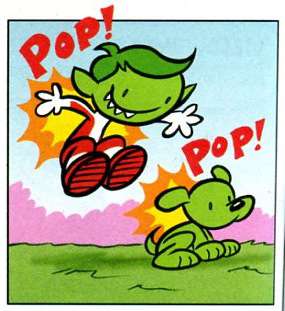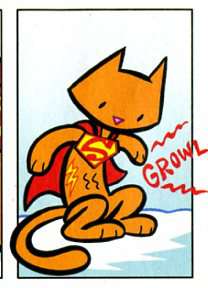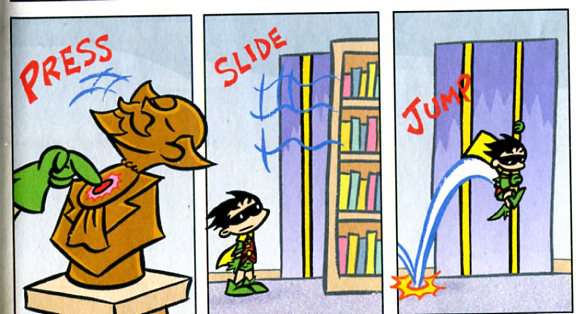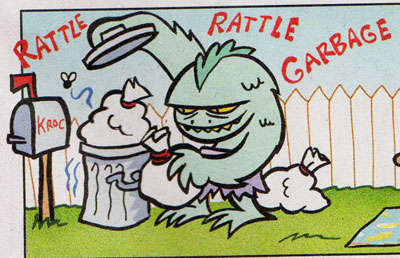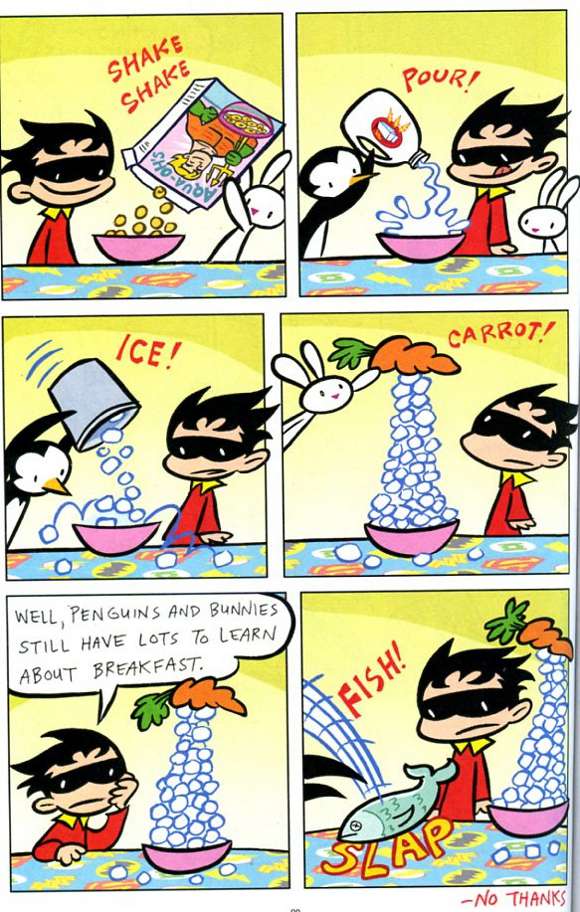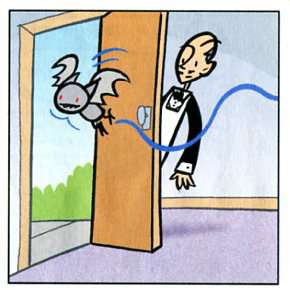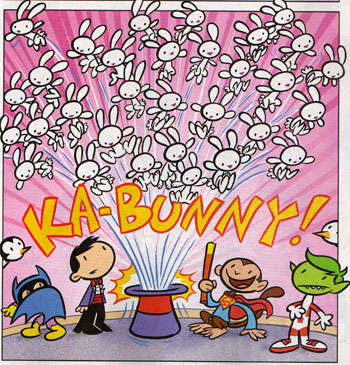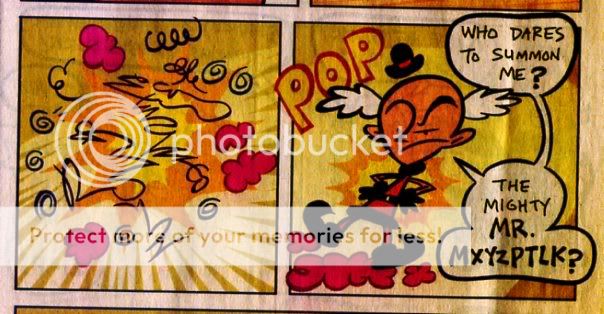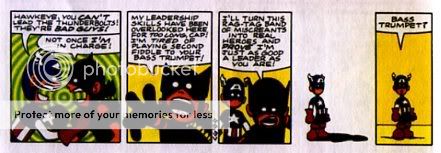This piece first ran on Comixology.
_________________
No western comic has better sound effects than Art Baltazar and Franco’s kiddie superhero title Tiny Titans.
As you’d expect, the comic has lots of standard issue sound effects. The Batmobile goes
Beast Boy changing into a dog goes
Streaky the Super-Cat’s stomach goes
And so forth.
But Baltazar and Franco also make extensive use of less familiar sound effects. So when Robin presses, slides, and jumps, it goes:
Or when Raven reaches, it goes:
Manga pioneered the use of this sort of effect; a sound that isn’t so much a sound as a stage direction. Baltazar and Franco have made the technique a central part of their world, and it’s one of the consistent joys of reading their comics. Part of the fun is the child-like logic of the thing. Of course, if you reach it sounds like “reach”. Of course, if Killer Croc is rustling through the garbage, it will sound like:
The sound effects are also used to emphasize or escalate jokes. For example:
The first two panels use appropriate sound effects; “Shake Shake,” for the cereal, “Pour!” for the milk. But then things begin to go awry…and the sound effects emphasize the goofiness. The ice in the cereal bowl is so wrong it goes “Ice!” the carrot is so incongruous in its carrotness that it has to scream “Carrot!” And the sound effects get the final punchline too. Poor Robin is slapped not only with the image of the fish, but with the word (“Fish!”) as well.
The sound effects do more than just add humor though. You can see this by looking again at that page above, especially at the first couple of panels. If you think about it for a second, you’ll realize that the first two panels aren’t actually traditional sound effects either. They’re not nouns (“Fish!”) but they’re not onomatopoeia either. Instead, (like Raven’s “reach”) they’re verbs. They label the action.
In comics, of course, there isn’t actually any action; no one moves. Usually, motion is conveyed through motion lines (as in the last panel, with the penguin slapping down the fish) or through the sense of time passing from panel to panel. Here, though, the motion is also created by the sound effects. They’re the analog to those clunky text boxes which would tell you that Spider-Man raced across the city, except that the text boxes have been streamlined and incorporated into the picture. The still image isn’t only an image; it’s also a word. And words come off the page; they go in at your eye and wander around your brain and come out as an idea. Which means that if an image is also a word, the image moves.
For Tiny Titans, then, sound effects end up as a substitute for animation. This fits naturally into artist (and letterer) Baltazar’s overall style. Tiny Titans, with its thick outlines, and simple figures, looks in some ways like an animated cartoon. Yet, at the same time, it’s unambiguously illustrational — much more so than a lot of slick, anonymous mainstream superhero art for adults. In the picture below, for example:
You can see Balthazar’s hand in the way the door curves out of true, or the slanting lines of the floor and doorjamb at impossible angles to each other, or in the bat’s delightfully wobbling motion line. It’s a drawing that’s not afraid of its drawingness. The charm is in the imperfection.
Similarly, Balthazar’s sound effects draw attention to themselves; they’re story-telling devices, and so they point to the storyteller. Again, the images are energized, or moved, not just by sequence, but by something like language — a conspiracy that goes back and forth between creator and reader. It’s a picture of a story, or a story of a picture. Which, for kids or adults, is hard to resist. Especially with bunnies.


